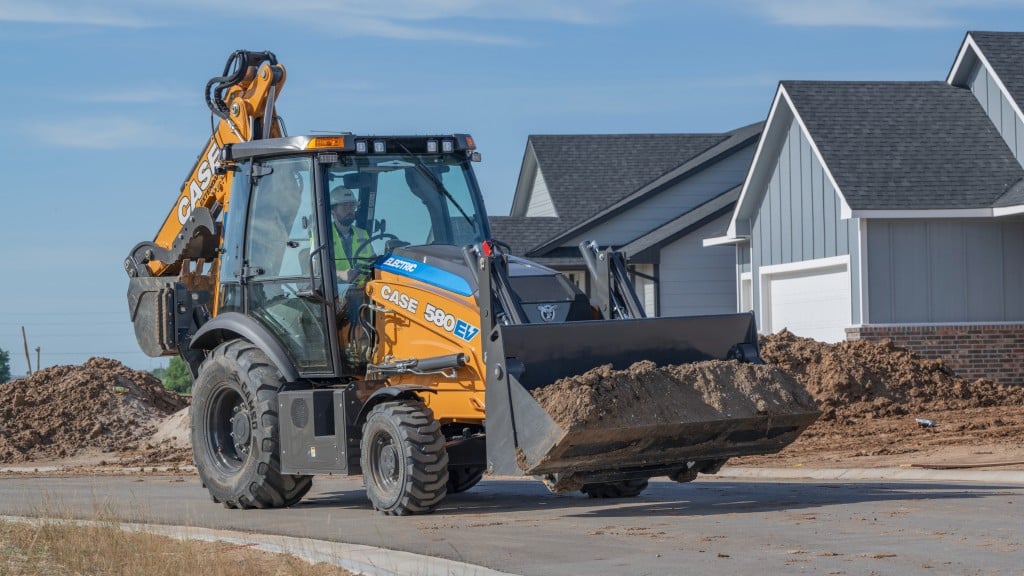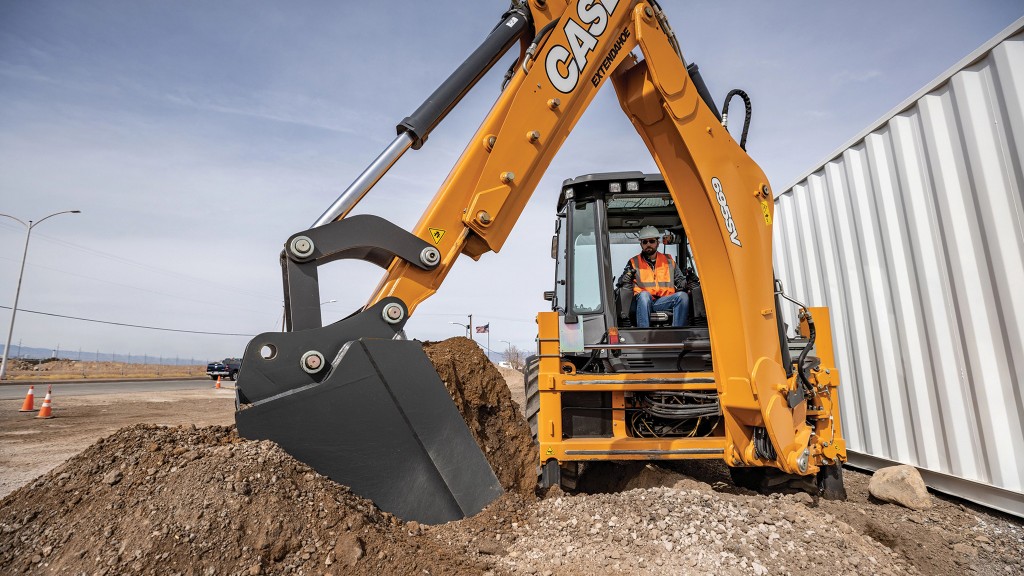CASE introduces the industry’s first electric backhoe loader
The 580EV electric backhoe is now in production

CASE Construction Equipment's first commercially available EV backhoe loader is a milestone machine introduction designed for municipal crews, utility teams, urban construction, and other contractors. The 580EV is the industry's first electric backhoe loader and provides a unique, zero-emissions, low-noise solution for a wide range of job sites from overnight construction, to work in urban centres, or other environments where noise and emissions must be limited.
"With the 580EV electric backhoe loader, we took an industry staple and designed it as a purpose-built EV to help crews meet increasingly unique job site demands and win more contracts on projects that prioritize sustainability criteria," says Terry Dolan, vice president, North America, CASE Construction Equipment.
CASE evolves its electric backhoe concept
The new CASE 580EV electric backhoe loader has the same loading and digging specifications and delivers the same breakout forces as the four-wheel-drive, 97-hp CASE 580SN diesel model.
The company has made significant changes to the electric backhoe since revealing the original EV concept, Project Zeus, at CONEXPO 2020. That concept was based on CASE's 580NEP model. According to George MacIntyre, product manager for backhoe loaders, the NEP backhoe is a lower volume model that is targeted at the rental market.
"We decided to go with our most popular model, which is the 580 Super N, which is in the heart of where the volumes are in backhoe sales," MacIntyre says. "We didn't step it up all the way to our 590 series because we also wanted to keep the weight within a reasonable amount for a backhoe. Everyone knows that with EV machines, the more weight you have on there, you're going to have more energy consumption because you just have more that you have to move. So it was an easy decision for us because the 580SN is our most popular model."
CASE took customer feedback from the Project Zeus model and optimized everything from thermal management to operator controls in order to electrify a machine with comparable specs to the 580SN.
CASE electric backhoe minimizes energy consumption and maximizes responsiveness
Powered by a 400-volt, 71-kilowatt-hour lithium-ion battery platform that's charged with the same type of Level 2 J1772 adapter found in automotive EVs, the backhoe can deliver up to eight hours of operational run time on a single charge, depending on the application. The battery platform also uses an advanced thermal management system with system-specific cooling circuits to better regulate temperatures and help maintain performance in hot or cold conditions.
The 580EV has four-wheel drive and uses two independent electric motors for the PowerDrive transmission and hydraulic pumps to feed the loader, backhoe, and steering systems to minimize energy consumption and improve performance in loading applications. Electrification gives operators instant torque and peak torque at any RPM, so they don't need to wait for an engine to ramp up to meet load demands.
The 14-foot backhoe also includes an Extendahoe to boost reach. ProControl swing dampening, PowerLift/PowerBoost, and electro-hydraulic controls improve precision.
Operators will appreciate the cab, including its energy-efficient heating and air conditioning, an 8-inch touchscreen display, customizable work mode/sensitivity settings, push-button start, and operator security codes. The backhoe's multicoloured, four-corner strobe lights let operators work safely and meet regulatory requirements; they have adjustable colours, strobe patterns, and an "always-on" feature for low-light conditions when strobes are not needed.
"We listened to what our customers wanted to see in an electric backhoe and purpose-built this machine to be an EV from day one," says Stemper. "Instead of just simply retrofitting a diesel powered machine, we considered everything that might impact energy efficiency. Throughout the validation process, we continued to refine systems across the unit to optimize efficiency without sacrificing anything for lift, anything for digging, and anything for driving performance."



